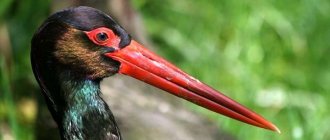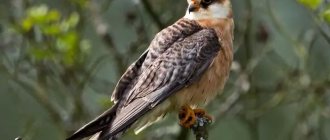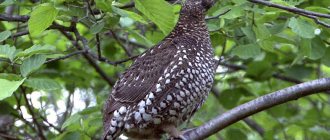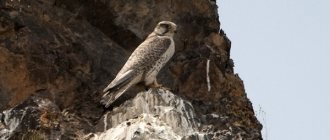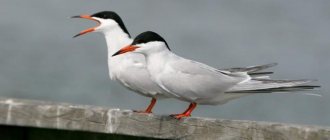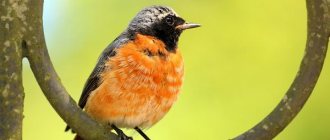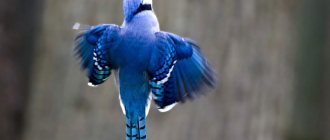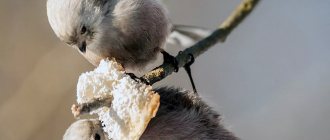Storks: description
It is typical for representatives of this genus to have long, unfeathered legs, as well as skin on the legs in the form of a characteristic mesh. These birds have a relatively long, straight, conical beak. The front fingers on the limbs, although short, are connected to each other by a wide membrane, and they are armed with pinkish claws. There may be areas of bare skin on the head and neck.
Appearance
The appearance of storks depends entirely on the species of the bird. Characteristic features are:
- Black storks are distinguished by the fact that their upper body is covered with black feathers, which give off a greenish or reddish tint, while the lower part of the body is almost white. Both thick and shaggy feathers grow on the chest, creating the appearance of a fur collar.
- The white-bellied stork has mostly black plumage, while the chest area, as well as the plumage under the wings, is white. This species of stork has red legs and a gray beak. The skin around the eyes is also red, although with the onset of mating season this color changes to blue.
- The white-necked stork has a characteristic black cap on its head, and the neck area, starting from the back of the body, is decorated with fluffy white plumage. Other parts of the body are covered mostly in black plumage, with reddish tinges in the shoulder area. The belly area, as well as the lower part of the tail, is white, while the coverts have a characteristic dark green tint.
- The Malayan woolly-necked stork has a basic black and white plumage and a red beak. The front part of the head is practically devoid of plumage, while it is painted in orange shades, and the presence of yellowish circles is clearly visible in the eye area. When the bird lives outside the breeding season, both adult and juvenile birds exhibit more modest coloring.
- American storks are distinguished mainly by their white plumage, while the tail feathers, as well as the fork-shaped tail, are colored black. This species of stork has a blue-gray beak color, and the eye area has orange-red patches of skin, and the iris of the eyes is pure white.
- White storks are characterized by a pure white plumage, with black wing tips. The neck is relatively long, as is the long, but not thick, red beak. The legs are also long, with a predominance of reddish tones in color. When the wings of a bird are folded, it gives the impression of having black tones, which is why Ukrainians call this bird “blackgut”.
Far Eastern storks are quite rare birds, while their appearance is similar to white storks, while they have a black and more powerful beak and limbs with a bright red color. In the eye area, a red edging formed by bare, unfeathered skin is clearly visible. The chicks have pure white plumage and a reddish-orange beak.
A heartwarming film about storks. Rowbicka storks. | Film Studio Aves
Character and lifestyle
The most common are white storks that inhabit low-lying meadows, preferring wetlands, and they often nest in close proximity to human settlements. They can often be seen slowly moving around the area in search of food, but when they see their prey, they quickly and deftly grab it.
Interesting to know! These birds communicate with each other using sounds produced by clicking their beaks. To do this, they throw their head back and retract their tongue into their beak. The result is a fairly loud clicking sound due to the amplifying effect of the oral cavity. Far Eastern storks are distinguished by the fact that these birds build their nests in places that are distant and inaccessible to humans, although they, like white storks, prefer to live near bodies of water, as well as near wetlands.
How long do storks live?
As a rule, the average life expectancy of these birds depends on the species, as well as the natural habitat. White storks living in natural conditions can live for a couple of decades. If these birds are kept in captivity, having organized comfortable living conditions, then these terms increase, and significantly.
Far Eastern storks, when kept in captivity, lived up to 50 years, while black storks in captivity live about 3 decades, although in natural conditions they rarely live up to 16 years.
Types of storks with photos
The stork genus is represented by the following species of birds:
Black stork (Ciconia nigra)
This is a fairly large species of stork with an original plumage color. The height of the bird is a little more than 110 cm, and its weight reaches 3 kilograms. The wingspan of the black stork is one and a half meters.
White-bellied stork (Ciconia abdimii)
This is a relatively small bird. The length of her body is no more than 75 centimeters with a body weight of no more than 1 kilogram.
White-necked stork (Ciconia episcopus)
The body length is about 0.9 meters, so this variety is considered average compared to the others.
Malayan woolly-necked storks (Ciconia stormi)
Which is comparable in size to the white-necked stork, since it grows up to 90 centimeters in length. Considered a rare species.
American stork (Ciconia maguari)
Adults weigh around 3 and a half kilograms. Their body length is about 1 meter, and their wingspan is about 1 meter, and their wingspan is about 1m 20 cm.
White storks (Ciconia ciconia)
It is considered a fairly large wading bird, gaining weight up to 4 kilograms. The maximum height is 1 m 20 centimeters, and the wingspan is almost 2 meters.
It is important to know! The image of a stork can often be seen on the coats of arms of various cities. His presence symbolizes caution and prudence.
Far Eastern storks are not impressive in size. They are often called Black-billed or Chinese storks, and they are classified as rare birds.
Marabou
The Latin name is Leptoptilos. This is the common name of the genus and includes Javanese, African, and Indian marabou. Like the Brazilian jabiru, these storks are large, with a large head and a massive beak. Even adult birds look more like ugly ducklings than beautiful swans. The wings reach 70 centimeters in length, and the birds weigh about 5 kg. The marabou has an unofficial name - “adjutant”, received for its gait, like that of the military. There is no feathering on the bird's head, as well as on the peculiar protrusion of the neck, which helps to hold the heavy beak. The tail, back and wings are dark gray or black.
Habitat
On European territory there are black and white storks, which are classified as migratory birds. In central Europe, these birds appear in February/March. These birds are not found in the vast expanses of England.
White-bellied storks live within the African continent, from Ethiopia to South Africa. As for white-necked storks, they can actually be found in southern Thailand; Malayan storks are found in western Malaysia and Brunei. These birds prefer to nest in biotones that are untouched by humans and represent lowlands with the presence of forest plantations. In addition, storks settle in floodplains of rivers, as well as near various fresh water bodies.
Interesting moment! Some populations of these birds are found in northern Korea, northeastern China, and also in Mongolia. These birds winter in the south, as well as in southeast China. These areas are characterized by the presence of wet areas, small ponds, and rice fields.
The habitat of American storks extends to the South American continent, starting from the expanses of Venezuela and ending with the territories of Argentina. Here they nest in damp areas, as well as near agricultural lands. Far Eastern storks prefer to live in the Far East, or rather in Primorye and the Amur region, as well as in the basins of rivers such as the Amur, Zeya and Ussuri.
Stork's nest - be careful
What do they eat?
As a rule, the diet of storks consists of food items of animal origin. Therefore, their diet consists of:
- From small vertebrates.
- From various invertebrates.
- From frogs and toads.
- From snakes and snakes.
- From locusts and grasshoppers.
- From earthworms.
- From mole crickets and May beetles.
- From dead and sick small fish.
- From small lizards.
- From various small mammals such as mice and rats, moles, hares, ground squirrels, and prairie dogs.
- From small birds.
The diet of white-bellied storks mainly consists of locusts and caterpillars, including other larger insects. White-necked storks prefer to inhabit park areas located near bodies of water, where they hunt fish, amphibians, snakes and lizards, including invertebrate animals.
Nutrition
Despite their beauty, storks turn out to be very dangerous for many living creatures, because they are birds of prey. Their biggest delicacy is frogs. Like the heron, a bird similar to a stork even in appearance, they feed on many creatures living in bodies of water, catching them in shallow water.
They love fish very much. Their varied diet also includes shellfish. In addition, storks love to feast on large insects; on land they catch lizards and snakes, even poisonous snakes. It is curious that these birds also pose a serious threat to small mammals, such as gophers, moles, mice, and rats.
All of the above are also included in their diet. Storks can even eat rabbits.
These birds are extremely skilled hunters. It is important that by walking back and forth on their long legs, they are not just walking, but tracking down the desired prey. When the prey appears in their field of vision, the birds run up to it with agility and dexterity and grab it with their strong long beak.
Such birds feed their young with semi-digested burps, and when the offspring grow a little older, the parents throw earthworms directly into their mouths.
Fish and frogs are the favorite delicacy of storks
Reproduction and offspring
A few centuries ago, storks mainly built their nests on tall and powerful trees, while trying to be as close to human habitation as possible. The nest, for the construction of which the birds used various building materials in the form of tree branches, could weigh several tens of kilograms. Over time, the nests of these birds began to appear on the roofs of houses, as well as on other outbuildings. Nowadays, stork nests can increasingly be found on power lines, as well as at industrial facilities. These birds build nests for themselves for many years, since storks always return to their nesting sites.
The males appear first at their nest, and then, after a few days, the females appear. On our territory, these birds appear at the end of March or at the beginning of April. The first female to appear at a male's nest can become his companion for reproduction, although sometimes several females simultaneously claim this role. The male chooses a female for himself and begins to court her, making quite loud and frequent sounds with his beak. With the help of such sounds, the male meets other males who invade his living space. The male defends himself with a long and sharp beak.
The female lays several eggs, and their number depends on the type of bird. The eggs are painted white, and both parents hatch the offspring. Males mainly sit on eggs during the day, and females - at night.
The offspring are born somewhere, in a month or a little more. The chicks are born, although sighted, but absolutely helpless. In the initial stages of life, their diet mainly consists of earthworms, which are brought to the nest by their parents. Older chicks already independently grab food objects located in the beaks of their parents.
Interesting to know! In our time, the existence of the oldest stork nest is known. It was built by birds in East Germany on a high tower and served as a home for birds for centuries, from 1549 to 1930.
Adult birds care about the health of their population, so sick or weak chicks are simply thrown out of the nest by their parents. About a couple of months after birth, the offspring take wings and, together with their parents, begin to explore living space. Parents teach the skill of flight, while they continue to feed the young for another 2 or 3 weeks. The chicks become completely independent at the end of summer, after which they fly away to warm countries for the winter. This process starts in September. Upon reaching 3 years of age, storks are ready to reproduce, but they begin to independently build nests only at 6 years of age.
Family of storks – Slavsky district
Migration routes
Many people are interested in where storks live in winter and why they fly away. The second question is easy to answer - with the onset of cold weather, their food disappears. The answer to the first question is more extensive. On the 70th day of their bird life, the chicks become young storks, gather in large companies, and from the last days of summer, without their parents, the flocks go south.
Scientists still debate how they find their way to places they have never been, but the main assumption is the instinct embedded in the genes of birds. It is believed that they are guided by atmospheric pressure, lighting and ambient temperature. It has been noticed that storks avoid flying over large bodies of water, such as the sea.
Adult birds leave their summer quarters around the 15th of September. Surprisingly, it turns out that where storks and ducks live is important for migration routes. Birds that spend the summer west of the Elbe migrate to Africa and settle in the region between the Sahara and the tropical jungle. Those living east of the Elbe make their way through Israel and Asia Minor, also reach Africa, only in its eastern regions, and winter in the lands from Sudan to South Africa. Storks from Uzbekistan and surrounding areas do not fly so far for the winter, but move to neighboring India.
There is a population of storks living in South Africa. These people don’t migrate anywhere at all, they live sedentary lives. Storks from Europe do not fly away for the winter either, where winters are not harsh and food remains active all year round. In the spring they form flocks again to fly home, but the young may remain in the south for a year, two or three, until they reach maturity.
Natural enemies of storks
These birds are distinguished by the fact that they do not have many natural enemies. This is due to a number of factors, such as the size of the bird, nesting in trees, etc. The fact that storks settle near human habitation also plays a huge role in preserving the population of these unique birds.
It is important to know! Experts have established one rather important fact from the life of these birds. These birds carry out sanitary cleansing of their ranks, mercilessly destroying the weak and sick of their relatives.
Despite such facts, world populations of storks are constantly declining due to human activity, as well as global climate change, which leads to the disappearance of natural habitats. Recently, there has been a steady trend towards the pollution of natural water bodies, as well as the drainage of wetlands. Such factors lead to the disappearance of various food sources for these birds, so some of them die of hunger, and some are forced to migrate in search of more comfortable living conditions. Many birds die on power lines because they like to build their nests on power poles.
How nests are made
Storks build houses with the expectation of living in them for a long time, i.e. thoroughly. The size of the nests is impressive - up to one and a half meters in diameter, the height of the walls is 50 cm. The weight of such a house in the first years may be small, but over time it increases due to the fact that the birds adjust and patch it up every year. As a result, the stork's old home can reach 250 kg. Twigs and fairly large branches are used as building material for a house that is built to last. This makes up the frame. Inside, a bedding is created from smaller and softer natural materials. Grass, straw, feathers, wool, moss, and turf are used.
Interesting! The age of a family nest, which belongs at different times to members of the same bird family, can be very impressive: 35, 100 years or more. There is a nest in Germany that has been a haven for birds for 381 years.
Myths and signs
Storks are such unique birds that over many centuries man has created a lot of legends, myths, speculations and superstitions that are known to us to this day. Almost everyone knows the most common legend, the essence of which is that storks bring children into the house. Among other things, with the help of storks, people manage to collect large harvests. To attract the attention of storks, people installed special devices on the roofs of their houses that made it easier for these birds to build their nests. When birds left the nest, it was believed that various troubles and misfortunes awaited the owner of the house.
Poets wrote poems about these unique birds, and composers composed music. They have become the heroes of some films and many cartoons that children love to watch.
